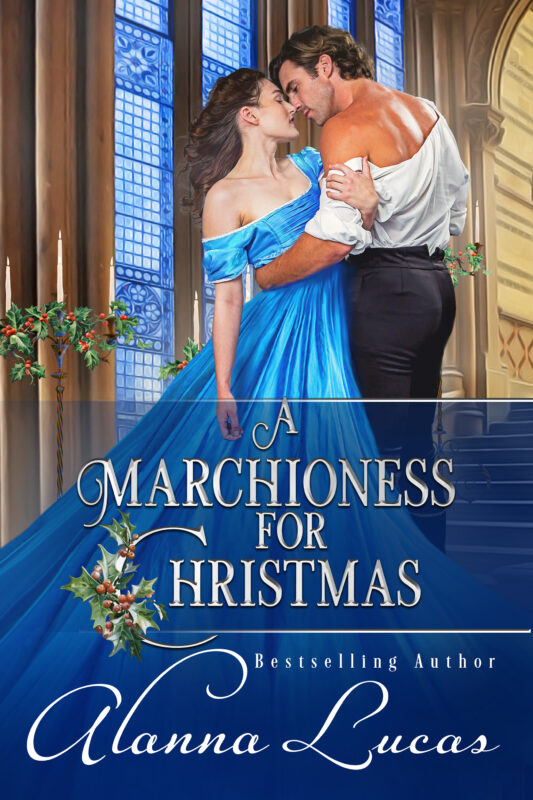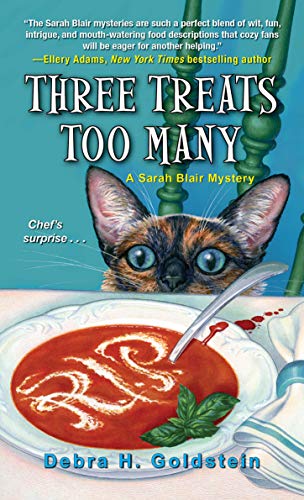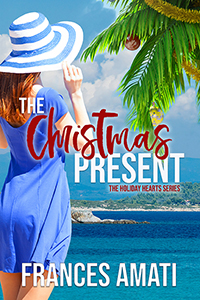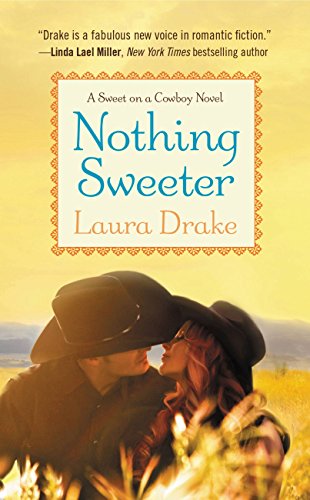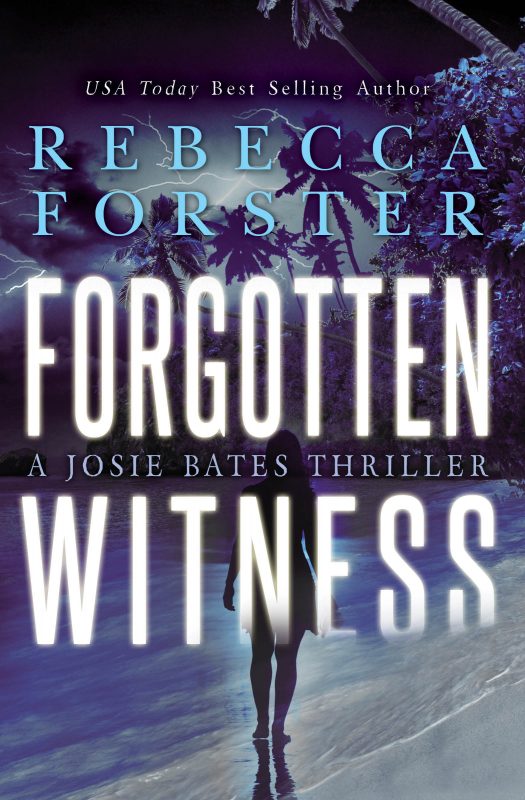Weird Things in 1950s Los Angeles by Janet Lynn and Will Zeilinger
February 3, 2018 by Janet Elizabeth Lynn and Will Zeilinger in category Partners in Crime by Janet Elizabeth Lynn & Will Zeilinger tagged as historicals, Los Angles, research, writing
The Capitol Records building has been sending out hidden messages since 1956.

As many tourists will tell you. One of the most recognizable landmarks of Hollywood (besides the Hollywood sign and the Chinese Theater) is the round Capitol Records building. It opened on April 6, 1956. That evening a red light on the tip of the spire atop the building at 1750 Vine Street (a couple blocks north of Hollywood Boulevard) began spelling out H-O-L-L-Y-W-O-O-D in Morse code. Then Capital president Alan Livingston ordered the light be added as a symbol that the Capitol Record label was the first with a presence in Los Angeles. Except for the years 1992 when the light blinked out C-A-P-I-T-A-L 5-0, celebrating Capitol Records fiftieth anniversary and 2016 when it flashed C-A-P-I-T-O-L 7-5 for the company’s seventy-fifth anniversary, the red light atop the spire continues to flash the original message.
World famous singers and musicians made Capitol Records their label, including: Nat King Cole, Ella Fitzgerald, Billie Holiday, Frank Sinatra, The Beach Boys, Judy Garland, Dean Martin and many more.

Even the most casual observer can see that the wide curved awnings over the windows on each story and the tall spike emerging from the top of the building resembles a stack of records on a turntable. But, Lou Naidorf, the building’s designer, didn’t have that in mind at all.
While Hollywood has undergone a lot of changes, this landmark has held its ground. Even in the 21st century, while many well known artists are recording music in a digital format. Turntables and vinyl LPs have regained popularity. Perhaps the meaning of the Capitol Records building’s design will once again be connected with the entertainment capitol of the world.
This iconic building was featured in several movies, including the 1974 movie “Earthquake,” 1997’s “Volcano” and 2004’s “The Day After Tomorrow” where it met an undignified demise. Despite these cinematic disasters, the light atop the building blinks out its H-O-L-L-Y-O-O-D message to this day.
1 0 Read more
Food: Adding Flavor to Stories
January 10, 2018 by Tari Jewett in category Charmed Writer by Tari Lynn Jewett, Writing tagged as Charmed Writer, cookbooks, decription, food, rain, research, Tari Lynn Jewett, writingRain has been pouring off and on for two days. My driveway is a small pond, the backyard is more than saturated, all of our plants look perky and happy, and so am I. As long as I know that my guys are all safe, and I don’t have to go anywhere, I love a rainy day. When I was a little girl, cold rainy days meant that my mother probably had a simmering pot of soup on the stove, meatball, chicken noodle or navy bean…meatball was my favorite… and more importantly, there would be warm cookies waiting when I got off the bus from school. My boys could count on much the same when they were growing up.
It’s funny how a rainy day makes me think of my mother’s cookies, or my own little boys walking in the door inhaling deeply hoping for the aroma of their favorite chocolate chip, peanut butter or snickerdoodle cookies.
I just finished a Valentine’s novella, that will be releasing next month, and I’m working on my 1920’s historical women’s fiction novel, and even while I’m writing, food comes up. Some of my characters love to cook, others eat in fine restaurants, others eat absentmindedly at their desks while they work.
As a former food writer, it’s not surprising that I love to write about the dishes my characters enjoy…or not. Some of my favorite research is looking for recipes in antique cookbooks, new cookbooks, online or perusing restaurant menus. Old restaurant menus can give you a real taste of the times, great descriptions and even prices. And antique recipe cards or cookbooks can tell you how differently we cook today. The ingredients, cooking tools, and terminology all can be clues to the era or region of a story.
 Since I love both books and cooking, I have a ridiculous number of cookbooks. I have culled the number after a couple of recent moves, but I look for them whenever I’m in used bookstores, and people often give them to me for gifts. One of my favorites is The One Maid Cookery Book, printed in London in 1913. I found this in an antique store. The minute I saw the title I knew I had to have the book. One maid, I have no maid! Oh, wait, I might be the maid!
Since I love both books and cooking, I have a ridiculous number of cookbooks. I have culled the number after a couple of recent moves, but I look for them whenever I’m in used bookstores, and people often give them to me for gifts. One of my favorites is The One Maid Cookery Book, printed in London in 1913. I found this in an antique store. The minute I saw the title I knew I had to have the book. One maid, I have no maid! Oh, wait, I might be the maid!
Another is The American Woman’s Cook Book edited by Ruth Berolzheimer, and published by Garden City Publishing Company in New York, 1943. This book was left behind in a house my husband and I rented years ago. It’s filled with information on table setting, entertaining, menu planning for every day, holidays, or a limited budget. The pictures are wonderful and set a real flavor for the time.
ago. It’s filled with information on table setting, entertaining, menu planning for every day, holidays, or a limited budget. The pictures are wonderful and set a real flavor for the time.
The rain seems to have slowed outside, and my husband and youngest son will be home soon. I think I’ll go get something warm in the oven. Today I think I’ll go with the chocolate brownies that are loved by Lucy, the main character in my Valentine’s romance #PleaseSayYes.
What are your favorite food memories? Do you use food to set the scene or add to the story when you write? When you read do you skip the food descriptions or do they speak to you? Can you be found sitting in the bathtub reading a cookbook like a novel? Or maybe that’s just me…
0 0 Read more
Life and Times of the 1950s: Vintage Holidays by @JanetLynn4
December 3, 2017 by Janet Elizabeth Lynn and Will Zeilinger in category Partners in Crime by Janet Elizabeth Lynn & Will Zeilinger tagged as fashion, holidays, Life in the 1950s, research
Vintage Holidays
During the 1950s holiday parties happened all month long. They included everything from Company dinners and dancing, Club/organization award dinners, to neighborhood parties. If the evening wasn’t a Black tie affair, dress was “Cocktail” or “After Five”. A great deal of time was spent by both men and women in preparing their holiday outfit. Many women made their outfits for the occasion or re-designed old dresses. Suburbanites who had jobs in the city but lived in the “burbs” realized they didn’t need to travel to the city in order to enjoy the holiday season. Simple to lavish affairs were planned in neighborhoods and by organizations in their local area. Still, fashion was important, regardless of where they live
Men of the ’50s were polished head to toe with stylish hats, suits, handkerchiefs, coordinated ties, socks and Wingtip shoes. Suits were slim fitting and skinny ties were the1950s fashion. Men pulled out the jewelry: collar bars, lapel pins, cufflinks, tie clips and most important…a watch. Many wore some of it or all depending on the event.
Women also followed the trend of the day with dresses that were cinched at the waist and dramatic necklines. In an effort to look coordinated, parures (matching sets of jewelry) were popular. These pieces were designed to be worn as a set. The women wore matching earrings, necklaces, bracelets, pins and rings. They strived for the “coordinating” look.
(Note: My mother-in-law, who lived overseas, was a “fashionista” of her time, 40s, 50s, 60s. Her strategy was to make or buy an evening dress that was full and long. Each year (with the help of fashion magazines) she would re-shape the dress by making the skirt less full, changing the sleeve and the neckline. The original dress was reshaped up to five times and they were beautiful each time.
As a youth, I lived in Long Island, New York in the 1950s, and my mother and several neighbor women did the same thing with store-bought evening dresses to keep within the yearly budget. This is how important fashion was in the 1950s.)
Everyone paid a great deal of attention to the coats they wore when they arrived at parties. After all, that was the first thing people saw when you stepped through the door. Full swing coats were popular for women, depending on where you lived and the temperature. Men wore full length coats. And again, the coats, for both sexes, were accessorized, i.e., pins, corsages or boutonnieres of artificial flowers, gloves, hat, etc.
After all, the holidays were the time to pull out all the stops.
This slideshow requires JavaScript.
Janet Elizabeth Lynn
Website: www.janetlynnauthor.com
Blog: www.themarriedauthors.blogspot.com
Check out our latest Skylar Drake Mystery.
3 0 Read more
What’s for Dinner? Depends on the Century #Food #History #Research by @LyndiLamont
November 16, 2017 by Linda McLaughlin in category The Romance Journey by Linda Mclaughlin tagged as food, history, Medieval Underpants, research, ThanksgivingSince Thanksgiving is a week away, it’s only natural that many of us are thinking about food. I love autumn and all the wonderful dishes that make up the traditional Thanksgiving feast, but did you know how many of them are New World foods?

Roasted Turkey On Harvest Table – c. evgenyb – license from Bigstock.com
The food supply expanded when Columbus “discovered” the New World. There were no potatoes, yams, tomatoes, pumpkins turkeys or maize (Indian corn) in the Middle Ages.
In Medieval Underpants and Other Blunders: A Writer’s (& Editor’s) Guide to Keeping Historical Fiction Free of Common Anachronisms, Errors, & Myths, author Susanne Alleyn takes a swipe at Cinderella’s pumpkin carriage in the Disney movie. The carriage it doesn’t bother me so much, since Disney’s Cinderella is apparently set in the 18th century, if the gowns are anything to go on. At least it’s an improvement on the scene in Snow White and the Seven Dwarfs where the Huntsman leads Snow White into an American forest. I’m pretty sure I spotted a raccoon and an alligator. (Known fact: You can’t trust Hollywood when it comes to research.)
There was also no chocolate, no tea and no coffee in the Middle Ages. Peasants drank beer at every meal. The nobility drank wine. The introduction of coffee and tea in the 17th century helped to sober up Europe for the Industrial Revolution, thank goodness. Even the sober Pilgrims and Puritans drank beer in the 1600’s. If you’re writing a Medieval romance, don’t show your characters drinking tea, even if it’s herbal. The word “tea” comes from the Chinese, and didn’t enter the English language until around 1655. Herbal infusions, sometimes called tisannes, were mainly used for medicinal purposes.
Chocolate is native to the Americas, so the Spaniards were the first Europeans to encounter it. It became popular at court after the Spanish added sugar or honey to sweeten the natural bitterness. From there, chocolate spread through Europe in the 1600’s, and how thankful I am that it did. The best hot chocolate I’ve ever had was the dark, molten variety you find in France.

coffee & chocolate, image licensed from Deposit Photos
Coffee drinking started in Arabia in the middle of the 15th century and had spread to Europe in the 16th century. It became more popular after 1600 when Pope Clement VIII declared it a “Christian” beverage. When Britain cut off America’s tea supply during the War of 1812, Americans turned to coffee and we’ve been a coffee-drinking nation ever since.
Tea comes from Asia and was introduced to Holland in 1610, in common use by 1675; introduced to England about 1660, where it steadily increased in popularity. The ritual we know as afternoon tea didn’t start until the 1840s. Afternoon tea was for the idle rich and includes finger sandwiches, scones and pastries. High tea, which isn’t nearly as grand as it sounds, was the name for the evening meal used by the working class and features a hot dish like a meat pie or stew.
Happy Thanksgiving!
Linda McLaughlin w/a Lyndi Lamont
Website: https://lindalyndi.com
Loss for Words by @DeniseMColby
November 12, 2017 by Denise M. Colby in category The Writing Journey by Denise Colby tagged as ideas, NaNoWriMo, research, StorytellingI’m at a loss for words.
Me. Someone who can talk incessantly. Who never seems to max out my words each day.
Why is it when I don’t have time to write, ideas and words flow in my mind? When I’m driving, in the shower, at a kids event. It seems that I have no issue coming up with blog post ideas and story ideas to explore or messages to write. I’m just not in a position to actually write them.
[tweetshare tweet=”Why is it when I don’t have time to write, ideas and words flow in my mind?” username=”A_SliceofOrange”]
But today? Nothing. I even left my house to work specifically on my NaNo work and write my blog post and guess what? My brain is mush. I want to curl up and take a nap.
Actually I think it’s because I’m exhausted. My bandwidth is maxed. And there’s good reason.
My husband and I are coaching my younger son’s robotics team. We have our FIRST Lego League tournament this weekend and we’ve been pulling more than double shifts.
We have six 7th graders on our team. Our robotics table is a large table with Lego missions all over it and our robot is made out of Lego’s. We program it to accomplish as many missions as possible in 2 1/2 minutes. Pretty cool.
But wait, there’s more.
 We have a five minute project presentation as well. Each year is a different theme and we have to find a real world problem within the theme and innovate a new solution. This years theme is Hydro Dynamics. Anything to do with human use of water.
We have a five minute project presentation as well. Each year is a different theme and we have to find a real world problem within the theme and innovate a new solution. This years theme is Hydro Dynamics. Anything to do with human use of water.
As the kids did their initial research, they stumbled onto how much water is used to make shirts. The information we found out is fascinating. Textile mills all over the world use a process called Wet Processing to shape, color and finish clothing. Not only do they use A LOT of water, the runoff is full of chemicals, so the water is not reused and pollutes the environment.
There are a number of solutions out there but there are over 15,000 mills in China alone. So getting each and every one to change takes time and money. And honestly their isn’t enough incentive to change.
Some brands such as Nike, Adidas, Levi and Patagonia are doing something about it and we reached out to several of them. Eileen Fisher gave us the most detailed information. We talked with their R&D chemist and learned more than we could ever put into our presentation. But she gave us the idea we needed for our solution.
See most of us don’t know water is used to make shirts. So awareness is key. If you can change people’s buying habits, it just might be the catalyst for real change. If we ask our favorite brands if they track and measure their water use, they in turn will ask their suppliers.

So the kids created a website to build awareness and tell people what they can do to help. We tie-dyed our own shirts and learned first-hand how much water is needed to rinse off the dye. We made word searches and coloring pages, as well as a glossary page of all the terms they learned over the past ten weeks. They showed to it to their friends, teachers and families and asked them to take a survey. Out of 38 respondents, 61% didn’t know that water was used to make shirts and 68% said they would change how they shop. We took all this information and put it into a presentation. And the kids created a fun skit to go with it.
They decided to call themselves Fiber Friends (think justice league – Fiber Friends Unite). Water waster owns a textile plant and wastes water. Batman, Flash, Blue Lantern, Aquaman and Wonder Woman (we have one girl and 5 boys on the team), capture Water Waster and upgrade the plant to save water. They do a great job and have lots of fun at the same time.
What I love about it is it’s just another form of storytelling and I’ve been able to help guide them in creating it. They learn so much with this entire program – research, problem solving, presentation skills, working together as a team.
I’ll have to update you on how we do, but in the meantime if you want to take a look at their website, here’s the link: https://ffunite.wixsite.com/fiberfriendsunite
Hugs & Blessings,
Denise

Although new to the writing fiction world, Denise Colby has over 20+ years experience in marketing, creating different forms of content and copy for promotional materials. Taking the lessons learned from creating her own author brand Denise M. Colby, Denise enjoys sharing her combined knowledge with other authors.
If you are interested in a marketing evaluation and would like help in developing a strategy for your author brand you can find out more here http://denisemcolby.com/marketing-for-authors/
2 0 Read moreAffiliate Links
A Slice of Orange is an affiliate with some of the booksellers listed on this website, including Barnes & Nobel, Books A Million, iBooks, Kobo, and Smashwords. This means A Slice of Orange may earn a small advertising fee from sales made through the links used on this website. There are reminders of these affiliate links on the pages for individual books.
Search A Slice of Orange
Find a Column
Archives
Featured Books
A MARCHIONESS FOR CHRISTMAS
Will Antonia be forced to endure yet another bleak midwinter?
More info →THREE TREATS TOO MANY
When a romantic rival opens a competing restaurant in small-town Wheaton, Alabama, Sarah Blair discovers murder is the specialty of the house . . .
More info →THE CHRISTMAS PRESENT
HOW FAR WOULD YOU GO TO PROTECT THE ONES YOU LOVE?
More info →FORGOTTEN WITNESS
A madman's ramblings, a government's secrets and a personal pain send Josie Bates into hell on earth.
More info →Newsletter
Contributing Authors
Search A Slice of Orange
Find a Column
Archives
Authors in the Bookstore
- A. E. Decker
- A. J. Scudiere
- A.J. Sidransky
- A.M. Roark
- Abby Collette
- Alanna Lucus
- Albert Marrin
- Alice Duncan
- Alina K. Field
- Alison Green Myers
- Andi Lawrencovna
- Andrew C Raiford
- Angela Pryce
- Aviva Vaughn
- Barbara Ankrum
- Bethlehem Writers Group, LLC
- Carol L. Wright
- Celeste Barclay
- Christina Alexandra
- Christopher D. Ochs
- Claire Davon
- Claire Naden
- Courtnee Turner Hoyle
- Courtney Annicchiarico
- D. Lieber
- Daniel V. Meier Jr.
- Debra Dixon
- Debra H. Goldstein
- Debra Holland
- Dee Ann Palmer
- Denise M. Colby
- Diane Benefiel
- Diane Sismour
- Dianna Sinovic
- DT Krippene
- E.B. Dawson
- Emilie Dallaire
- Emily Brightwell
- Emily PW Murphy
- Fae Rowen
- Faith L. Justice
- Frances Amati
- Geralyn Corcillo
- Glynnis Campbell
- Greg Jolley
- H. O. Charles
- Jaclyn Roché
- Jacqueline Diamond
- Janet Lynn and Will Zeilinger
- Jaya Mehta
- Jeannine Atkins
- Jeff Baird
- Jenna Barwin
- Jenne Kern
- Jennifer D. Bokal
- Jennifer Lyon
- Jerome W. McFadden
- Jill Piscitello
- Jina Bacarr
- Jo A. Hiestand
- Jodi Bogert
- Jolina Petersheim
- Jonathan Maberry
- Joy Allyson
- Judy Duarte
- Justin Murphy
- Justine Davis
- Kat Martin
- Kidd Wadsworth
- Kitty Bucholtz
- Kristy Tate
- Larry Deibert
- Larry Hamilton
- Laura Drake
- Laurie Stevens
- Leslie Knowles
- Li-Ying Lundquist
- Linda Carroll-Bradd
- Linda Lappin
- Linda McLaughlin
- Linda O. Johnston
- Lisa Preston
- Lolo Paige
- Loran Holt
- Lynette M. Burrows
- Lyssa Kay Adams
- Madeline Ash
- Margarita Engle
- Marguerite Quantaine
- Marianne H. Donley
- Mary Castillo
- Maureen Klovers
- Megan Haskell
- Melanie Waterbury
- Melisa Rivero
- Melissa Chambers
- Melodie Winawer
- Meriam Wilhelm
- Mikel J. Wilson
- Mindy Neff
- Monica McCabe
- Nancy Brashear
- Neetu Malik
- Nikki Prince
- Once Upon Anthologies
- Paula Gail Benson
- Penny Reid
- Peter J Barbour
- Priscilla Oliveras
- R. H. Kohno
- Rachel Hailey
- Ralph Hieb
- Ramcy Diek
- Ransom Stephens
- Rebecca Forster
- Renae Wrich
- Roxy Matthews
- Ryder Hunte Clancy
- Sally Paradysz
- Sheila Colón-Bagley
- Simone de Muñoz
- Sophie Barnes
- Susan Kaye Quinn
- Susan Lynn Meyer
- Susan Squires
- T. D. Fox
- Tara C. Allred
- Tara Lain
- Tari Lynn Jewett
- Terri Osburn
- Tracy Reed
- Vera Jane Cook
- Vicki Crum
- Writing Something Romantic
Affiliate Links
A Slice of Orange is an affiliate with some of the booksellers listed on this website, including Barnes & Nobel, Books A Million, iBooks, Kobo, and Smashwords. This means A Slice of Orange may earn a small advertising fee from sales made through the links used on this website. There are reminders of these affiliate links on the pages for individual books.











